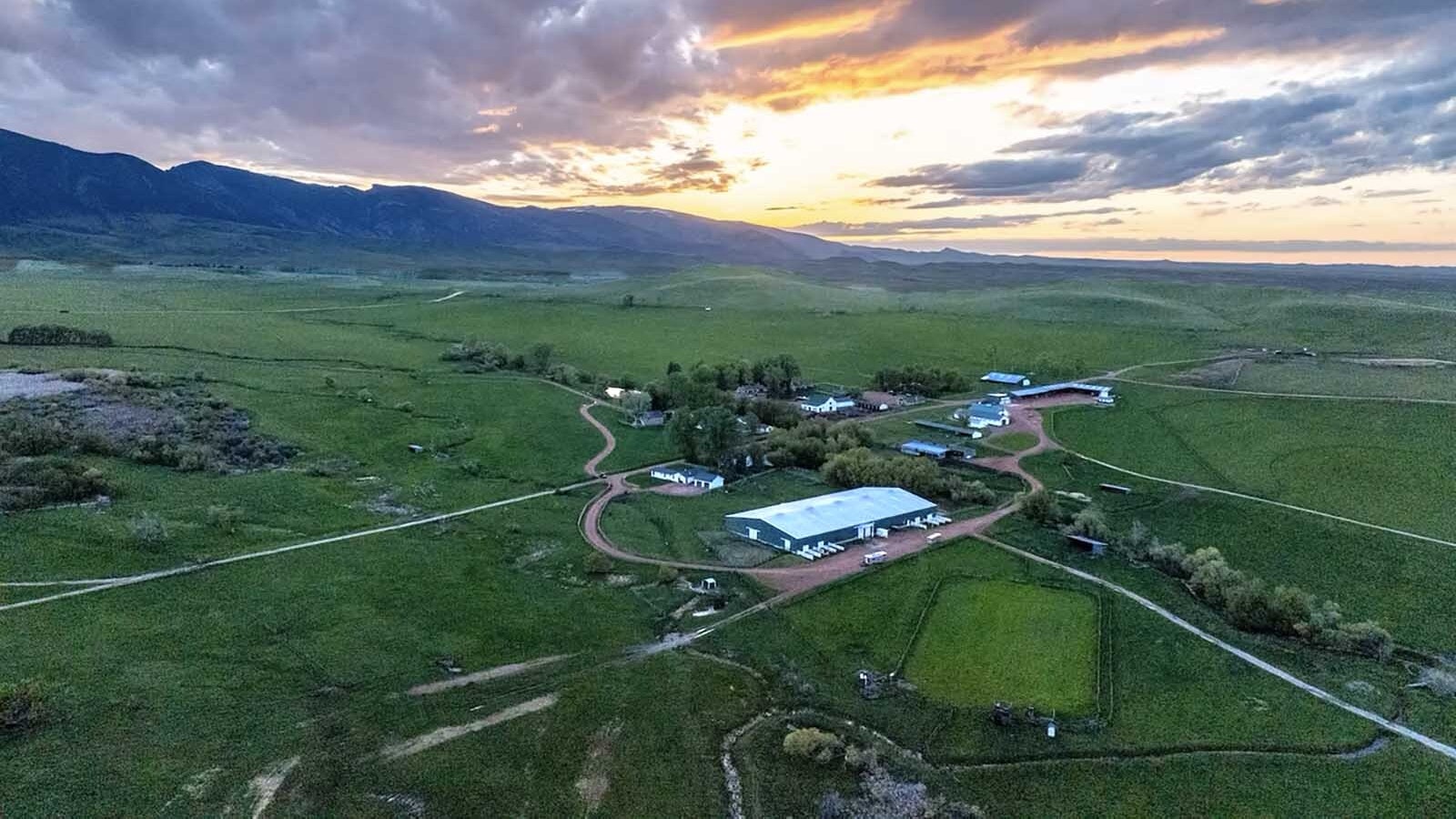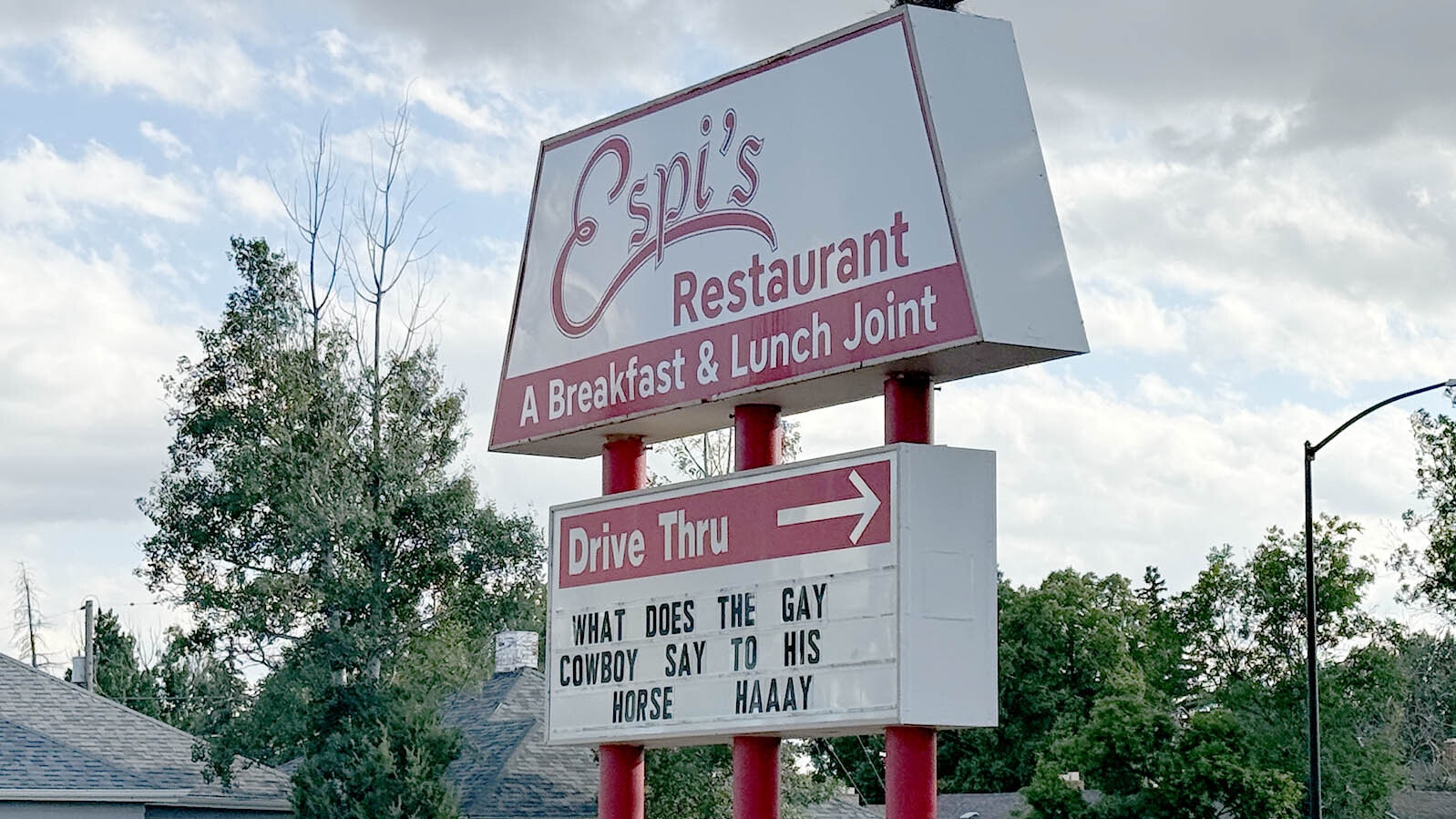MILLS — For grown-up boys who remember their Tonka toys, the sight of a yellow truck body that can haul hundreds of tons at a time will turn heads and rock memories.
But the humongous 20-foot-high, 24-foot-wide, and 50-foot-long buckets for giant mining trucks that come out of a company in Mills, Wyoming, are certainly no toys. And it takes a lot of effort to make and ship them.
Cowboy State Daily recently observed one of the truck bodies as it sat on a heavy haul truck with flashing lights at Austin Engineering USA in Mills, ready to roll to its next destination.
Johnny Greer, Austin’s General Manager for North America, said these trucks, with a capacity for anywhere from 100 to 400 tons of material, represent the firm’s primary business.
Mines are his customers, and Wyoming is famous for its huge open-pit coal mines that produce more than 200 million tons of the stuff every year.
“We’ve got gold mines down in Nevada, we’ve got copper mines in Arizona, oil sands up in Canada, iron ore, you name it,” he said. “Coal is definitely the majority of what is in Wyoming, but even uranium and phosphate, borax. There are multitude of commodities that are mined in surface mines that use our products.”
WOTCO
The company was born Western Oil Tool Co. (WOTCO) in 1938 and moved to Mills in 1940. Its specialized products for mining equipment for many years were tied to a specific and well-known original equipment manufacturer, but after the North America Trade Agreement in the 1990s, that company shifted to Mexico.
The Mills firm regained its feet by making products specially designed and engineered to order for individual mines.
Acquired by Austin in 2007, the Mills plant serves the North America region. There are also branches in South America, Australia and Indonesia.
Greer said business has been good.
“There is strong demand, and our order book is pretty much full through the balance of the year with orders going into 2025,” he said.
The 140-employee firm includes engineers, welders, machinists and others. The company plans to add a night shift in the near future.
Austin produces about 140 truck bodies a year, an eight-week process from start to finish for each. A night shift could cut that time down to six weeks, maybe even four.
In addition to mining truck bodies, Greer said the firm also makes water tanks for the same size truck chassis. The tanks can hold from 38,000 to 56,000 gallons. Other products include various buckets to load the truck bodies.
200 Parts
Making the bodies requires a lot of steel plate. Greer said the firm’s engineering team produces the design for the specific beds requested by the mine. From that design parts are created out of the steel, welded together to create the whole, sandblasted and then painted. A typical truck body has about 200 parts.
Sizes can range from 24 feet wide to 34 feet. The typical heights are around 20 feet and lengths near 50 feet. In 2011, the firm shipped a Guinness World Record truck body to a coal mine in Wyoming. The truck body was 21 feet high, 35.5 feet wide and 50 feet long.
Sending a product of these dimensions down the highway requires a lot of planning.
“There is a ton of different variables that go into shipping these things. That piece you saw up front was 21 feet tall and 35 1/2 feet wide, and it went down the highway on a trailer from here to the mine in one piece,” he said. “That is part of the beauty of doing that in Wyoming, we can do that here. If we are shipping out of state, we have regulations for each state that we have to follow.”
The company works with experience heavy-haul trucking firms that have the right flatbed trailers and seasoned drivers who understand the perils and particulars of getting the truck body down the road in all environments. The haul companies also know how to deal with the challenges posed by department of transportation regulations in each state.
How many semis it takes to ship an order depends on where the order is going.
“Most everything we ship going into Canada we ship in two pieces, and they do the final assembly up in Canada,” he said. “If it is going to an open pit mine in Kentucky or West Virginia (the order) will have to be cut into four or five pieces to navigate the narrow roads of the region.”
Routes And Construction
It’s a huge challenge just to map out and navigate routes to customers, especially with variables like road construction. Greer said his firm depends on carriers to manage and route each shipment and come back with the shipping price that is tacked onto the cost of the product. For truck bodies, that cost is “well over $100,000,” Greer said.
If there is bridge replacement or some other construction issue, significant charges could be added to the cost of shipping. Greer said occasionally his company holds the body until road construction is completed, but more likely the receiving mine will choose to pay the higher cost.
Each state’s DOT puts different demands on the deliveries. Some states only allow traveling by day, others mandate the shipment only travel at night. While deliveries always are accompanied by three to five support vehicles with flashing lights, Greer said some states mandate a state highway patrol escort, which significantly increases shipping costs.
“So, it’s definitely a daunting task to make everything happen, which is why we count on the experience of heavy haul carriers,” he said. “They have specialized equipment, specialized operators who are accustomed to delivering heavy-haul oversize shipments. Guys who are pulling just your typical 8-foot-wide loads aren’t seasoned to be moving something that is 20-plus feet wide.”
Each delivery must take into account the winds and weather that can cause havoc for Wyoming drivers during the winter, as well as the weather through states that are part of the delivery route.
“In Casper with the wind like it is lately, loading outside with a crane with the wind like this is impossible, that’s one of the challenges,” Greer said. “We aren’t really geared to load shipments in the workshop, but occasionally we have to because of the wind.”
Wyoming DOT Relationship
Greer said the Wyoming Department of Transportation has worked closely with the company. That relationship became important when the DOT was redoing a Casper intersection just down the road from the plant. Every truck body that is shipped goes through the intersection on the way to the Port of Entry in Casper where permits, documents and loads are checked before leaving the region.
“They widened (the intersection) and wanted to put in traffic light posts that went across the intersection. At the time they had them at a certain height which would not allow us to get out of here,” he said. “We had to actually work with the DOT to revise the design on those structures to raise them higher to get through that intersection.”
When the firm shipped its world-record body to Peabody’s North Antelope Rochelle mine in June 2011, power lines had to be raised.
“The state of Wyoming has been fantastic to work with in that regard,” Greer said.
The future of Austin’s facility in Mills looks now like it could stretch far into the future. Greer said the firm is seeking architects to design a new and improved facility.
“We’re hoping to break ground in the fall,” Greer said.
Dale Killingbeck can be reached at: Dale@CowboyStateDaily.com












